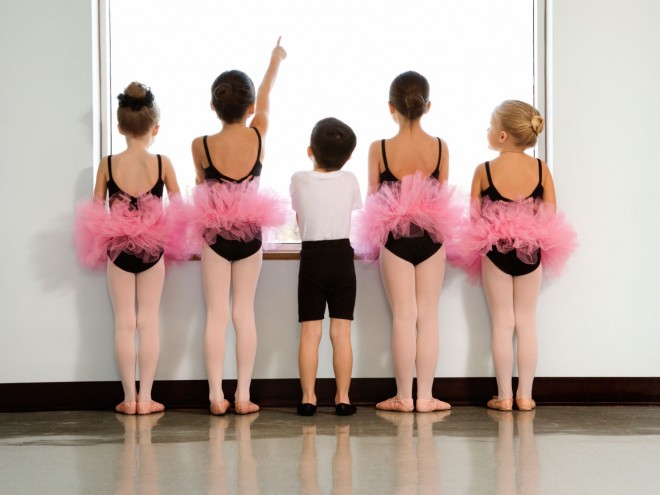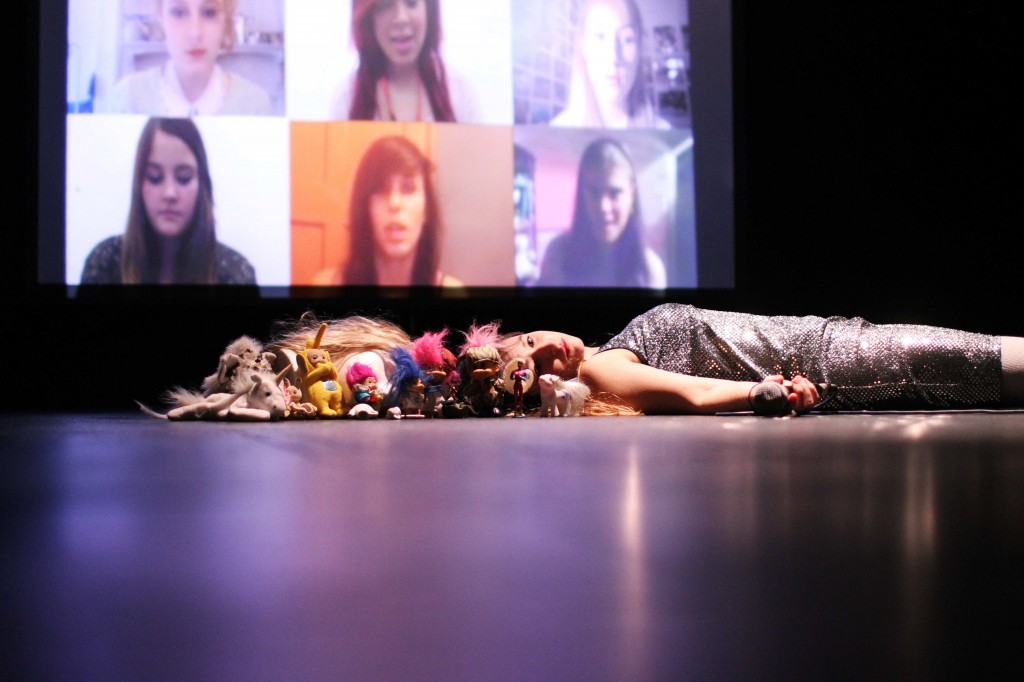(In response to a reader’s comment, this post discusses ways in which parents can help their children moving away from internalizing dangerous and limiting gender stereotypes. Read on!)
Gender stereotypes hurt both men and women. Boys might curb their emotions and girls their opinions in order to be accepted socially. Back in the 1960s Margaret Mead -famous anthropologist, a researcher passionate about observing gendered behaviour in tribal communities around the world (see her book: Male and Female) – noted how gender stereotypes effectively limited people’s freedom and expression, perpetuating wrong assumptions such as: boys should be brave and strong while girls should be reticent and delicate; boys are active and strive for dominance while girls are passive and submissive. The list goes on and on, with qualities and characteristics rigidly assigned to one gender or the other so that a man/boy should express masculinities traits (to the exclusion of feminine ones), while a woman/girl should express feminine qualities (to the exclusion of masculine ones).
This is commonly referred to in the literature as gender polarisation. Gender stereotypes are constantly perpetuated within movies, TV programs, advertising, songs’ lyrics: so much that we all become convinced this attribution of qualities are natural and incorrigible, when in fact is far from it! Research shows that masculine and feminine attributes generally co-exist in each woman/girl and man/boy. Regardless of gender, there is an infinite variation and mixing of these attributes in each individual, with most men/boys displaying more masculine qualities and most women/girls displaying more of the feminine ones. But in most cases it’s still difficult to assess which of these attributes are defined/created by NATURE (biological) and which ones by NURTURE (socialisation): a mix of the two is probably the correct answer.
In my research, the main factors which seemed to greatly influence girls’ choices regarding ways to express femininity were within the family; for example, the relationship with their siblings (with girls having a close bond with an older brother being less stereotypical in their gender expression) and how gender roles would be enacted within the family (in other words, whether their parents would endorse gender stereotypes or not, and how rigidly these stereotypes would be endorsed). Girls living in families with a more flexible gender roles orientation would not only express a less stereotypical femininity, but would interpret and respond to sexualized or stereotypical representations of girlhood in adverts and media differently. This means that the values and practices within the family can really act as a protective shield against the constant media pressure surrounding our girls and boys.
So, how can parents help both girls and boys break through gender stereotypes? Here are some suggestions (and I warmly invite my readers to showcase their own ideas):
1. Research proved that children learn behaviour from their parents so a parent’s example will always play a key role in how they will envisage and enact gender. Ideally, try to make sure there is a balance maintained in the distribution of the house chores: fathers should engage on a daily basis with childcare and household duties (and I mean kitchen, laundry and ironing duties, not DIY!). This can often be a challenge in itself, due to many men having been raised by old-generation’s mothers who would cook, wash, iron and make their bed without them lifting a finger: in these unfortunate cases they have learned by habituation not to pay attentions to household chores or children and they would often think is the right thing to do. Nowadays, most men who care about their family, will be prepared to listen to logical arguments about gender equality and equal opportunities, but more importantly they may be interested in their children being modern and finding a loving partner, so – provided they are not complete misogynist – they should be able to adapt and accept their fair share of house/kitchen duties. Decision-making should also be a shared activity, with an equal amount of “power” and dialogue between the couple, especially with regard to managing children education/discipline and household’s expenses. When children see that both parents are equally involved with decision-making and household chores, they will naturally learn that both girls and boys can and should do things.
2. Make your children play with toys that help expand gender boundaries. Although is true that children tend to gravitate to gender-specific toys (i.e. boys playing with cars and action figures, while girls with dolls and decorations) we still don’t know how much this behaviour is genuinely guided by their interest or learned through socialisation (example: “I am a boy so I will play with boys stuff”). For this reason, I’d recommend having at least some gender-neutral or “gender-stretcher” toys in the house, to give the chance to a child to experiment with other type of play should he/she wish to. In my research most girls benefiting from sharing play time with an older brother were less stereotypical in their gender expression. Parents who buy a different range of toys and let the children follow their curiosity will encourage their children to think outside the ‘gender box’. My son for instance love to make cards and practices weekly gymnastic: 2 traditionally girls-oriented activities which he truly enjoys, along his other more male-oriented sports, like football or tennis. The trick is to understand what children genuinely like to try or do and to make them aware that there are not specific tasks which should be assigned to a gender or another. If parents make children aware that their gender expression is not limited by strict rules, then they will feel able to go beyond the mechanic/natural repeating of behaviour that they see around them, including in the media (i.e. “no mummy, that is for boys!”). More importantly, they will not feel that there is something naturally wrong with them if they feel enthused by particular gender-specific activities or toys usually not associated with their sex.
3. Expose children to books and movies that stretch gender stereotypes and discuss with them the prevalence of stereotypes in the media to help them become critical consumers of media products. It is ridiculous that many books out there, even modern books, still refer to almost all characters – animals/monsters/ghost/ or whatever weird creatures of fantasy – by the pronoun “he”. Writers or book editors seem to forget that animals or any other characters should come in two genders: you should talk about this with your son or daughter so that they can start to see the bias too! Try to balance and counteract their exposure to gender sterotypes by offering different perspectives through the material you watched or read with them. For example, look for books with boys in gentle, caring or peaceful roles and with girls in leading and active roles. Let boys have a look at decorating or cook books to see if they are interested. Buy books about science, tricks or sports for girls too. Have a look at a wonderful resource database to find counter-stereotypical material of all kind (books, movies, clothes and more) which I’ve suggested in one of my earlier posts: amightygirl.com
4. Let boys develop a sense of style and beauty by letting them wear nice and colourful things. Boys’ clothes tend to be very monotonous in colour and themes from quite a young age compared to girls clothes. I noticed that in the boys’ aisle all clothes are usually blue/grey/brown and of course black! I might find the odd t-shirt with some red, orange or yellow only with a bit of luck. I think it’s nice to try to add some colour and sparkle into boys’ wardrobes. Otherwise boys tend to grow up with the impression that “beautiful things are for girls”, which is an incredibly stupid and depressing thing! The reality is that children are masters at getting clues from their environment so they will often notice from the world around them (mainly school and media) that girls are into beautiful stuff while boys should not care about it. For the most artistic children, this idea could deter them from what they really like. As a mother I try to find a way to make my boy understand that there is nothing inherently “girly” in decorations or beautiful things, but the media around him seem to suggest him different things.
5. Try to make boys understand that they are much more similar to girls than not. And make girls understand what they share with boys. Despite what the media want to make us believe, boys and girls are not two different planets. We are all human, gender is only one attribute. Most media products and marketing play on the polarisation of gender: “Women from Venus and Men from Mars”, but emphasising the similarities between boys and girls instead of the contrasts is one of best way to make children grow free of gender stereotypes. Allow gender-bender or gender-swap role play and dressing-up: children absolutely love trying different costumes – they don’t have to be typical costumes for boys and “girly” costumes for girls. If children want, let them impersonating the other gender. Keep some gender-varied costumes in a box for both boys and girls to play dressing-up, as it’s one of the most rewarding and educational activity a child can do.
6. As the emphasis for girls is so much on their look and appearance, try to counter-act media and society’s pressure in that direction by complimenting their personality, brain, abilities instead of focusing on beauty. The pressure to look beautiful on them is so ubiquitous that you, as a parent, don’t need to reinforce it! This does not mean you don’t tell them every day how gorgeous they are (I never skip a day!!) But beyond you reaffirming their gorgeousness, it is important that they do understand and value themselves in other terms too from a very young age, or they will start internalising those messages and seeing themselves only or mostly as eye-candies for the boys: a difficult process to reverse and one which will create anxiety and absorb much energy when they reach adolescence! Encourage girls to pursue sports, be bold if they wish to and never ever confine them only to typically ‘girly’ activities: instead, let them experiment with some boys-oriented activities and games if they wish to!
7. Most importantly, perhaps: treat children as individuals – not as boys or girls – allowing them to express their own opinions and emotions, helping them challenging the assumptions behind gender polarisation. In this way they will feel encouraged to pursue their own genuine interests, instead of denying who they are and being restricted to society and media clichés. 😉











